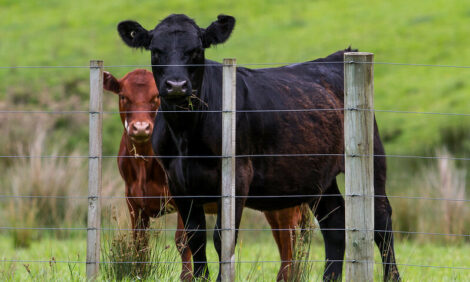



A Potential Solution for Suckler Beef
UK - One of the strategic principles that underpinned the Task Force’s recommendations for the red meat industry was that production investment should be focussed towards creating economically viable scale and efficiency. According to a Livestock and Meat Commission (LMC) bulletin, increased scale was unlikely to be achieved in real terms by individual producers scaling-up because of constraints on land availability, but could be made possible by creating ‘virtual scale’ through producers cooperating in formal arrangements.Efficiency could be improved by removing some of the costs of production, especially some of the fixed costs of labour and machinery. Such a move has recently featured in the NBA’s ‘Beef Farmer’ magazine showing an example of how four beef producers have united in a major project to create scale to enable significant reductions in machinery and labour expenses. Three of the producers have upland spring-calving suckler herds, and the fourth has a beef finishing unit on an arable unit.
Production system
These four producers were cooperating before decoupling, their first step being for the arable producer to winter finish on cereals the 18-month old stores produced by the three upland farmers. This was done under a shared ownership agreement whereby the income from the finished animal was split between them, largely based on the amount of weight each unit produced. The decoupling of subsidies, higher cereal prices and finishing at around two years of age made this system uneconomic even after allowing for the cost efficiencies produced by the collaborative venture.
Now a new model is proposed based on finishing animals at 18 months off grass during their second summer. Instead of transferring 18-month old stores to the arable unit in the autumn, cows with calves still at foot will be transferred, which will leave the upland units carrying only dry ewes during the winter. On the arable unit the cows and calves will be out-wintered on stubble turnips, hopefully through to the turn of the year, when weaning will take place (oldest calves will be 10 months old at weaning). Depending on weather conditions the weaned calves will continue to be out-wintered with just the cows being housed. The cows will be fed an ammonia-treated straw based ration in preparation for calving in early March.
With the upland units only carrying dry ewes over the winter, there will be good growth of early grass. The weaned calves will be returned to the upland unit with the most grass in mid to late March, to be grazed to target a first draw of finished cattle in early July, with the final ones sold in late September. The cows will be calved on the arable unit and returned to the three upland units as and when grass growth allows i.e. they would stay for longer on the arable unit on ammonia treated straw in a late spring, and return sooner to the upland units in an early spring.
Benefits to the different units
UPLAND UNITS: will no longer have to close up grass for conserving winter feed; could increase stock carrying capacity and expand herd size; no need for silage making, bedding and mucking-out machinery so potential to eliminate all machinery costs except perhaps a quad bike for inspecting out-wintered dry ewes; housing and bedding purchase costs avoided; significant saving in labour costs for silage making, bale carting and stacking, feeding and bedding cattle in winter ; a more mobile labour force sub-contracted to the arable unit during peak summer needs and only to the herd during the winter, at calving and selection of finished cattle for slaughter.
ARABLE UNIT: easier forward planning for stock arrivals and departures; specific arable machinery e.g. tractors, trailers, forklifts, can be used in the otherwise quiet winter period; improved investment in skilled staff concentrating on crops in the summer when no livestock and livestock in the winter when no arable work; straw can be used on the farm saving transport costs;muck from over-wintered cows can be used for growing potatoes.
Further Reading
| - | You can view the full report by clicking here. |
TheCattleSite News Desk


